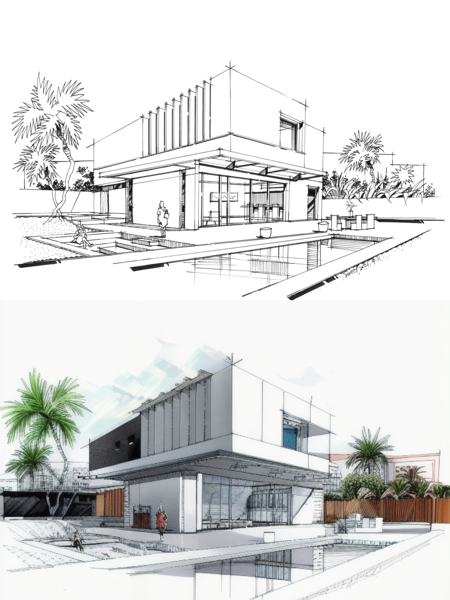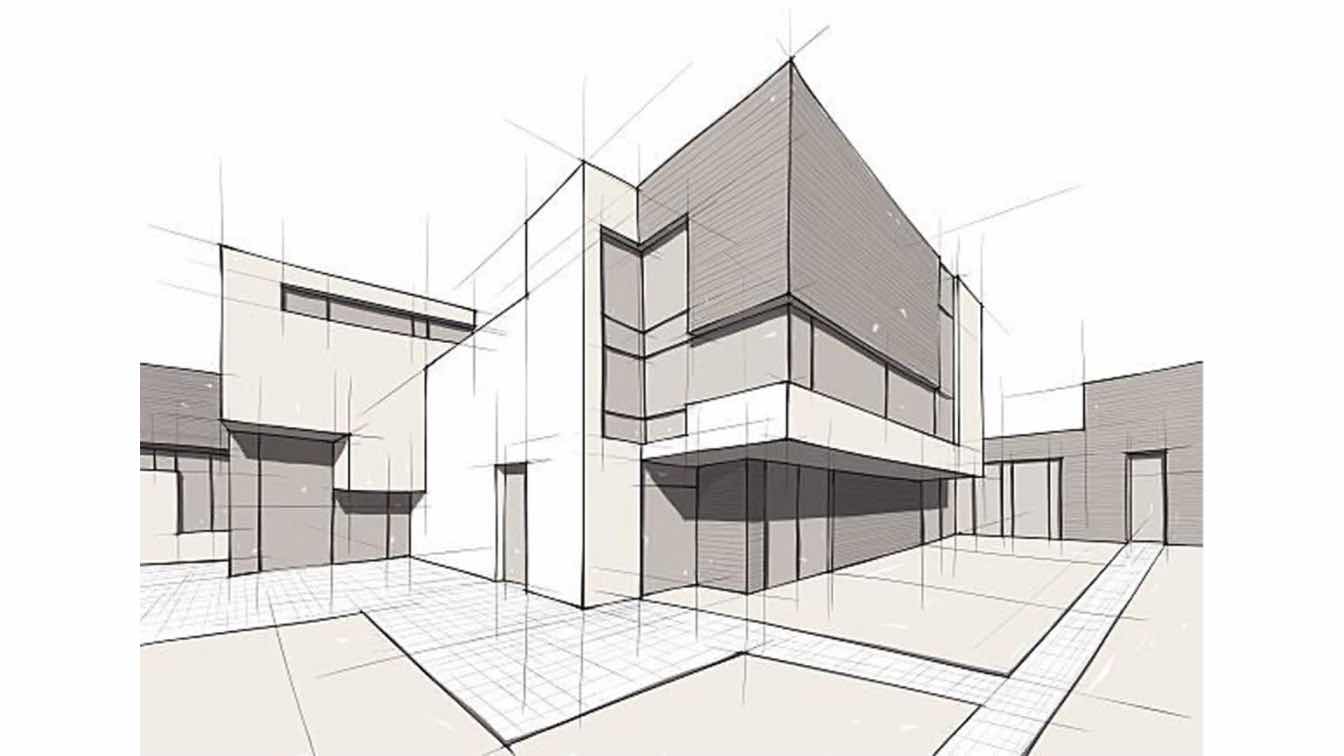A Comprehensive Overview of Architectural Designs and Their Impact on Modern City Planning and Advancement
Building styles have long served as a mirror to the social worths and technical developments of their time, playing a critical function fit modern city planning and growth. From the grandeur of Neoclassicism to the utilitarian approach of Brutalism, each design has introduced special ideas that affect metropolitan aesthetics and performance. As contemporary obstacles emerge, including sustainability and community demands, recognizing these historic structures comes to be essential. The resulting discussion not just notifies future layout practices however also increases essential concerns concerning the equilibrium between heritage and advancement in our progressing city landscapes.

Historical Introduction of Building Styles
Throughout background, architectural designs have advanced in action to cultural, technological, and ecological variables. Each duration shows the prevailing worths, beliefs, and improvements of its time, resulting in a rich tapestry of layout that signifies human creative thinking and adjustment. The ancient people, such as the Egyptians and Greeks, established foundational styles that stressed balance and proportion, offering both useful and visual objectives.
As cultures transitioned with the Middle Ages, Gothic architecture arised, characterized by its verticality and intricate detailing, mirroring the spiritual aspirations of the age. The Renaissance marked a resurgence of timeless suitables, merging art and architecture in innovative manner ins which affected subsequent designs across Europe.
The Industrial Revolution introduced new materials and building strategies, triggering movements like Modernism, which tested traditional types and welcomed simplicity and capability. The 20th century saw a diversity of designs, with Postmodernism reacting against the stark minimalism of its predecessor, including historic recommendations and diverse aspects.
Today, building styles proceed to advance, driven by globalization and sustainability problems, mirroring a vibrant interaction between heritage and innovation (cda architects). This historic overview highlights the relevance of architecture as a mirror of societal evolution and as a catalyst for metropolitan development
Trick Architectural Styles Explained
The variety of building designs reflects the myriad influences that form our developed environment, each embodying unique attributes and social importances. Secret building styles consist of Classic, Gothic, Baroque, Modernism, and Postmodernism, each standing for distinct historical contexts and aesthetic ideologies.
Classical style, rooted in old Greece and Rome, highlights balance, percentage, and using columns. In contrast, Gothic style, thriving between Ages, is characterized by sharp arches, ribbed vaults, and flying buttresses, producing an angelic top quality in basilicas. Baroque design, emerging in the 17th century, is marked by grandeur, intricate embellishment, and a vibrant interaction of light and darkness.
Innovation, which gained momentum in the very early 20th century, prioritizes feature over form, making use of brand-new products like steel and glass to develop minimalist frameworks. Postmodernism, responding versus the austerity of Modernism, embraces eclecticism and historical referral, usually including spirited components and irony.
Understanding these styles gives understanding right into the social stories and technical innovations of their see this particular eras, highlighting just how style serves not equally as a sanctuary, but as a representation of societal values and aspirations.
Effect On Urban Preparation
In shaping the advancement of cities, building styles substantially affect city planning decisions. The choice of architectural design often determines the aesthetics, performance, and total character of metropolitan environments. cda architects. As an example, innovation, with its emphasis on minimalism and capability, urges open rooms and the combination of modern technology, shaping city layouts that prioritize efficiency and accessibility. On the other hand, conventional designs may emphasize historical conservation, bring about city layouts that keep cultural heritage and promote pedestrian-friendly settings.
Additionally, architectural designs can affect zoning guidelines and land make use of policies. Urban planners must consider the prevailing building patterns when designing areas, guaranteeing that new developments balance with existing frameworks. This factor to consider cultivates natural metropolitan landscapes and improves community identification.
The execution of certain architectural designs can also influence socioeconomic factors within a city. As an example, high-end modern designs may draw in wealthy homeowners and companies, leading to gentrification, while more inexpensive housing remedies could focus on sensible and sustainable styles to fit varied populaces. Eventually, the interaction between architectural styles and metropolitan planning creates vibrant cities that mirror both historical context and contemporary needs, shaping the lived experiences of their citizens.
Sustainability and Modern Style

Contemporary building activities, such as biophilic design and environment-friendly design, advocate for frameworks that balance with their surroundings, using natural products and advertising biodiversity. These designs usually include renewable resource sources, such as photovoltaic panels and wind turbines, to minimize dependence on fossil gas and lower carbon impacts.
Additionally, the combination of sophisticated innovations, such as clever structure systems, improves energy monitoring, maximizing source usage while making sure occupant comfort. Ingenious water monitoring approaches, including rainwater harvesting and greywater recycling, more add to lasting metropolitan atmospheres.
Notably, sustainability extends past ecological problems; click site it includes social and financial dimensions. By promoting neighborhood health and advertising inclusivity, modern architectural styles align with lasting growth objectives. Consequently, the evolution of building practices remains to shape durable cities that not only satisfy the demands of the here and now however likewise secure the future for generations to find.
Neighborhood Engagement in Design
Neighborhood interaction in design functions as an important bridge between designers and the populaces they serve, guaranteeing that the built environment shows the requirements and desires of its users. This collaborative process invites community members to add their understandings and choices, promoting a sense of ownership and responsibility toward the spaces they occupy.
Effective community interaction uses different approaches, such as workshops, studies, and public discussion forums, to gather varied perspectives. These techniques assist in a two-way discussion, allowing engineers to recognize local contexts while equipping residents to articulate their problems and desires. This inclusivity not just enhances the layout quality however additionally promotes social equity by addressing the distinct challenges encountered by marginalized groups.
Moreover, area interaction can cause ingenious options that might not arise in a typical design process. By integrating neighborhood knowledge and social values, designers can produce spaces that resonate more deeply with individuals, improving functionality and sustainability. Ultimately, focusing on neighborhood involvement in style processes leads to settings that support social communications, assistance wellness, and reinforce community connections, thereby playing a crucial role fit contemporary metropolitan landscapes.
Conclusion
Building styles have actually exceptionally affected modern city planning and advancement, reflecting More hints progressing cultural and technological contexts. As cities continue to expand and adjust, the ongoing dialogue between building heritage and contemporary style concepts will certainly remain necessary in creating inclusive, lively spaces that improve quality of life and promote social equity.